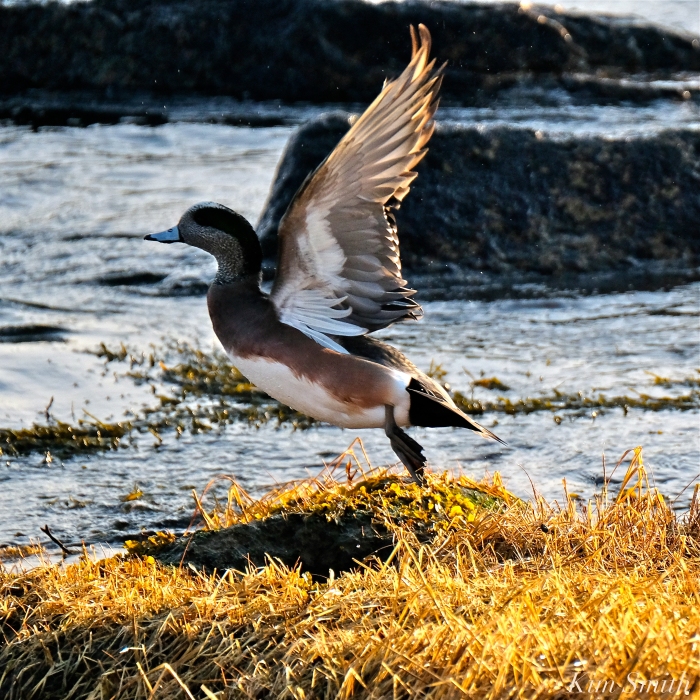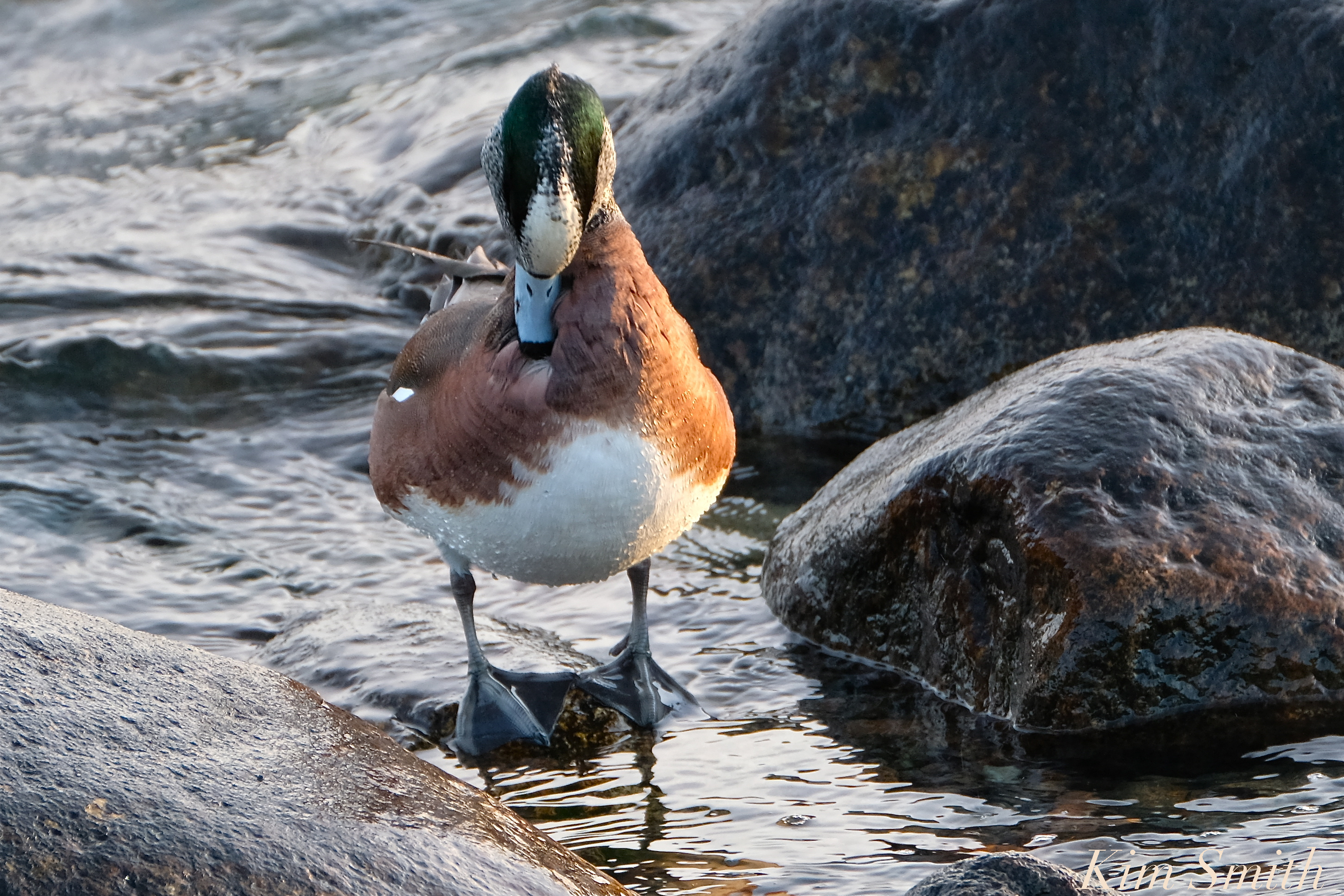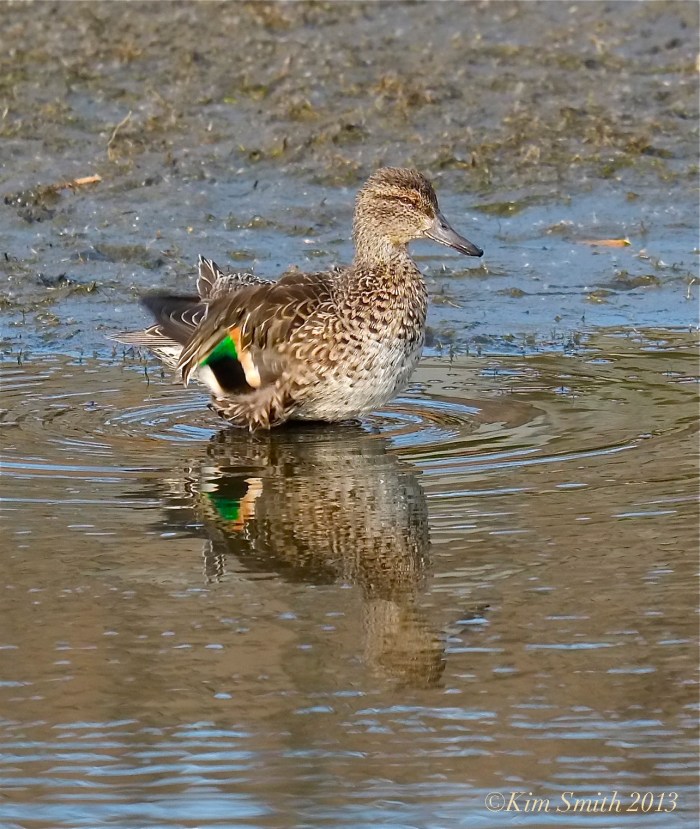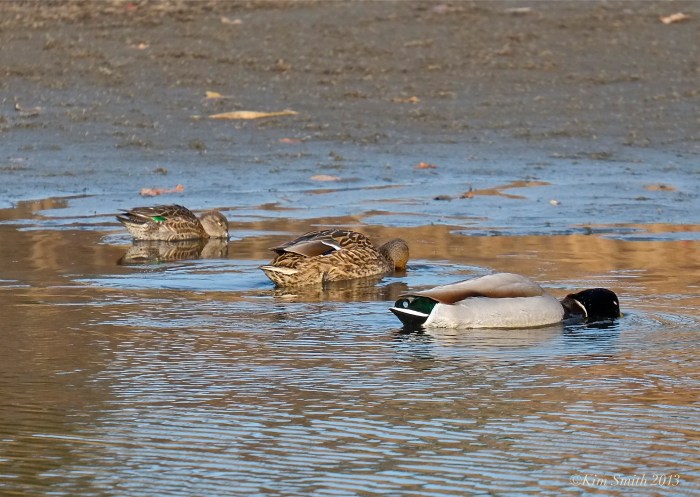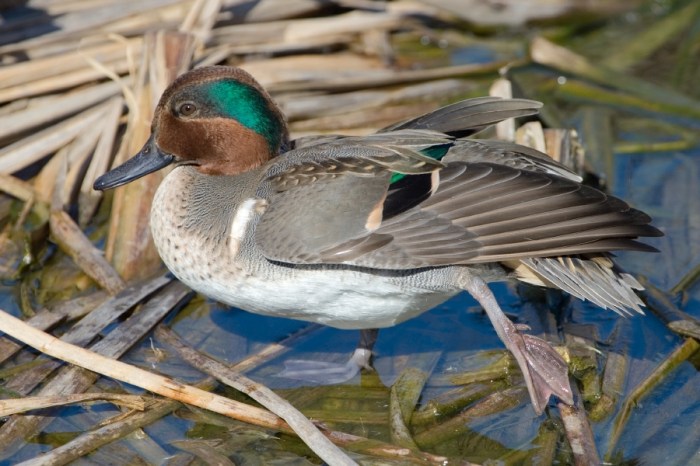For the past week or so, a duo of male American Wigeons has been spotted foraging along the coastline. They dip and dabble, close to the shore, and are eating sea lettuce and seaweed.
American Wigeon male eating sea lettuce
Smaller than a Mallard but larger than a Bufflehead, the punky male flashes a brilliant green swath across the eye and has a beautiful baby blue bill. The males were are also colloquially called “Baldplate” because the white patch atop his head resembles a bald man’s head.
Oiling their feathers (called preening) and constantly aligning the feathers keeps the ducks both afloat and aloft.
Notice how the water forms beads on the duck’s breast, a sure sign the feathers are well-oiled. Ducks have a gland at the base of their tail called the uropygial gland (you can also say preen gland or oil gland). The preen oil creates a protective barrier that prevents the feathers from becoming waterlogged.
I like to think of the American Wigeon as both spunky and punky. Spunky because of the way they bounce back after diving in rough surf. Punky because of their occasionally holligan-like behavior.
Last year when first encountering American Wigeons I didn’t understand why the Mallards were so aggressive towards the Wigeons, snapping and nipping at the pair whenever they got too close to the Mallard’s meal. Now I see why. American Wigeons often feed alongside other ducks, especially diving ducks such as Coots. The Wigeons opportunistically snatch away the aquatic vegetation the divers pull up although, our two travelers were quite amicable and while feeding together, not in the least hoodlumish toward each other.
Watching the ducks tumbling around in the rough surf while casting about for food is a site I won’t soon forget. It was beautiful to see the Wigeon’s surf dance but also a window into their daily struggle for survival. I marveled at the ducks’ resilience. Roughly a third of migrating birds that winter each year in the mainland of the United States do not survive the journey.
The pair has not been since that morning foraging in the choppy waves. Perhaps they took a cue, of winter weather yet to come.
For many weeks during the late winter and early spring of 2017, a male and female American Wigeon made Rockport their home, and now we have had these two feisty boys. I wonder if the Wigeon’s winter range is expanding northward or if we are merely a stopover on their southward migration. Most of the migration occurs further west and south so I think we are pretty fortunate to have this dynamic duo visiting our shores.
